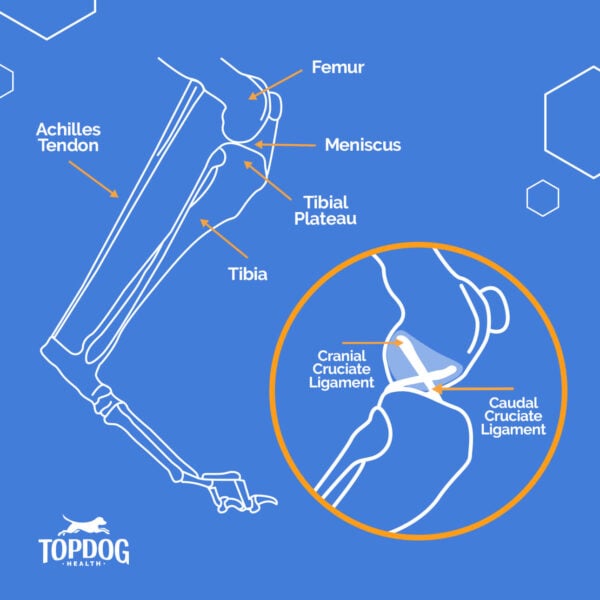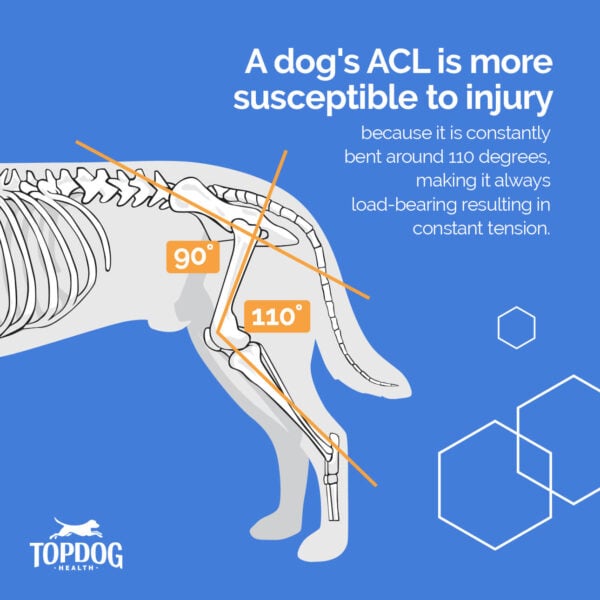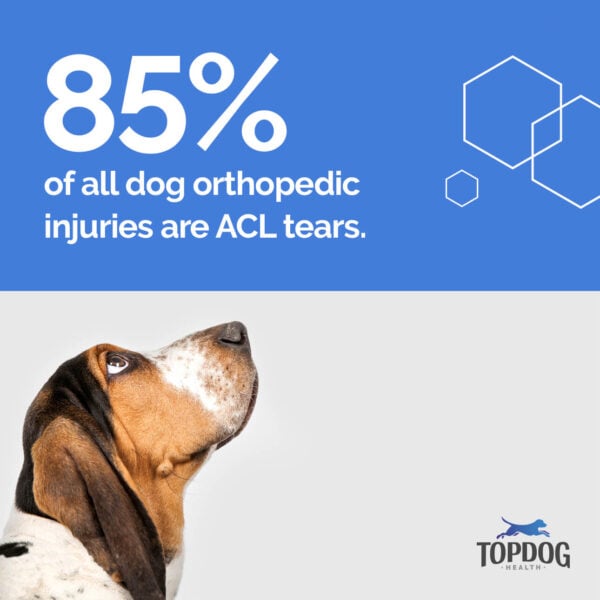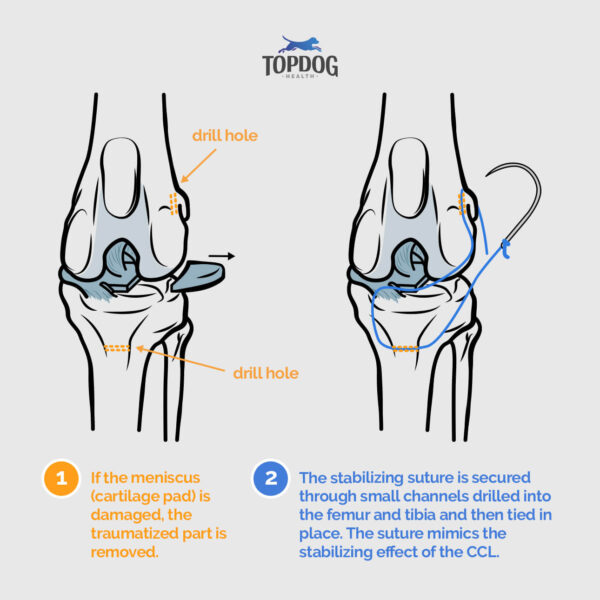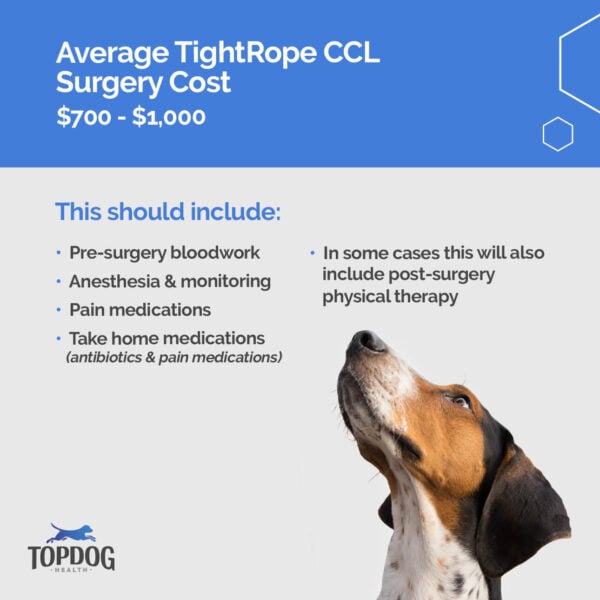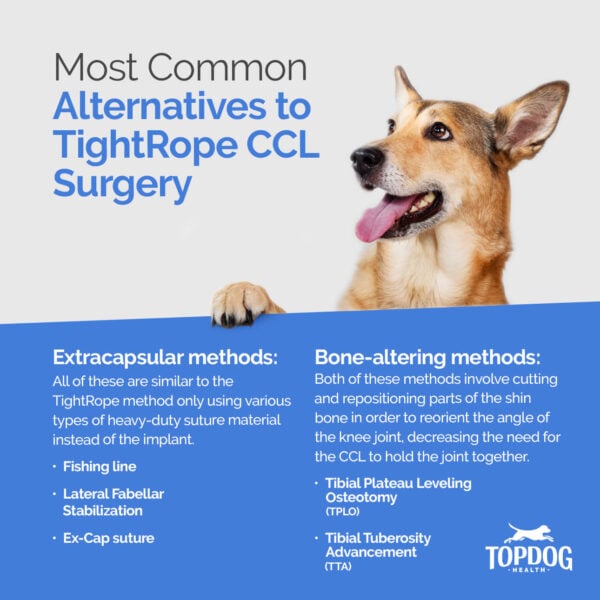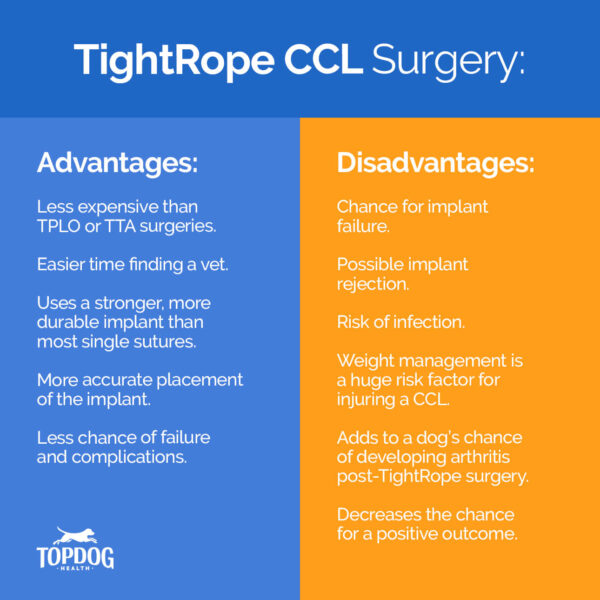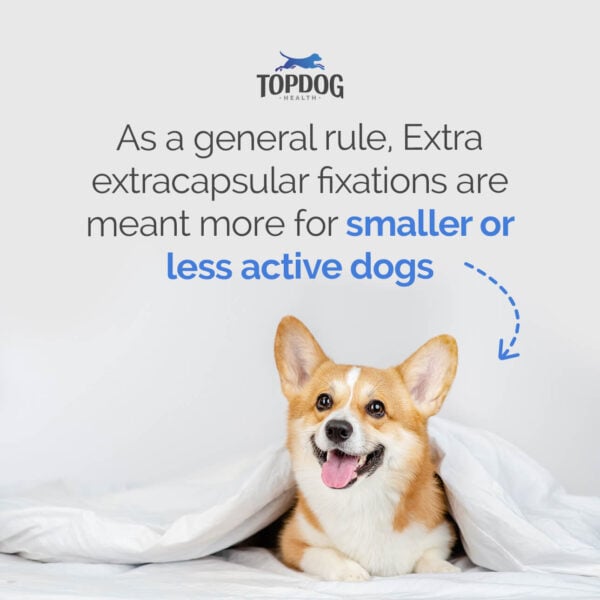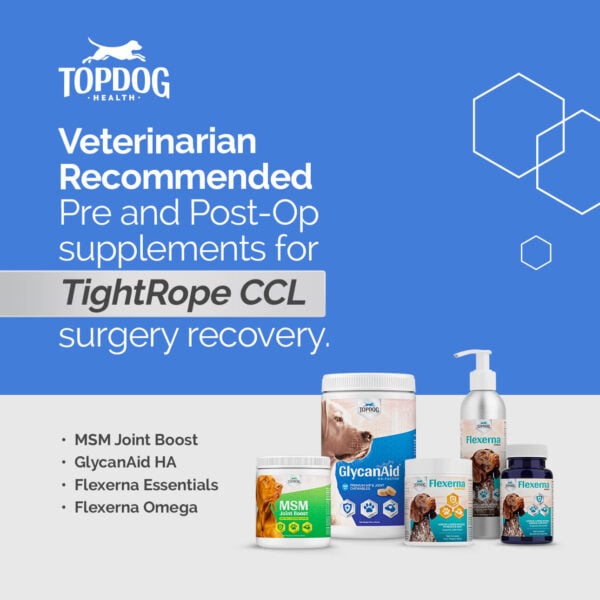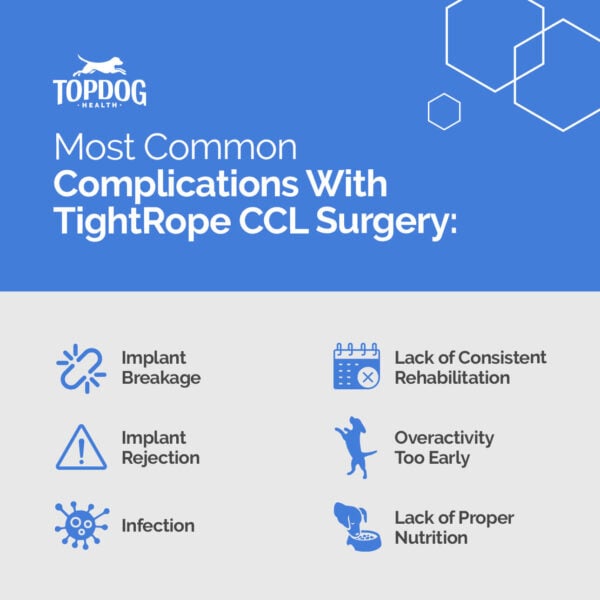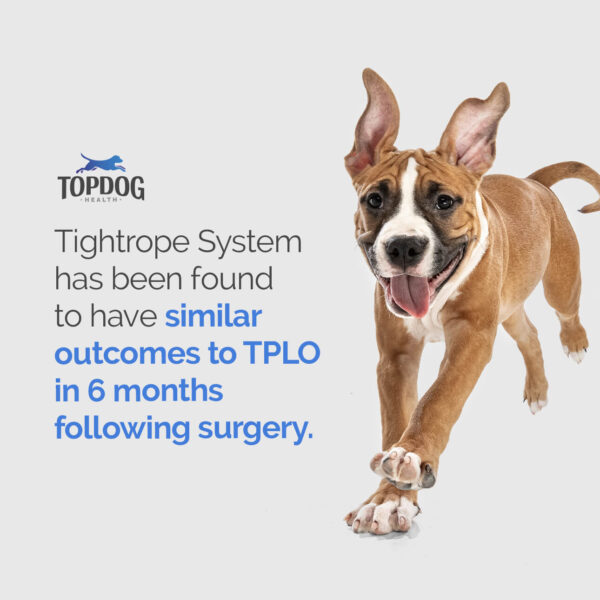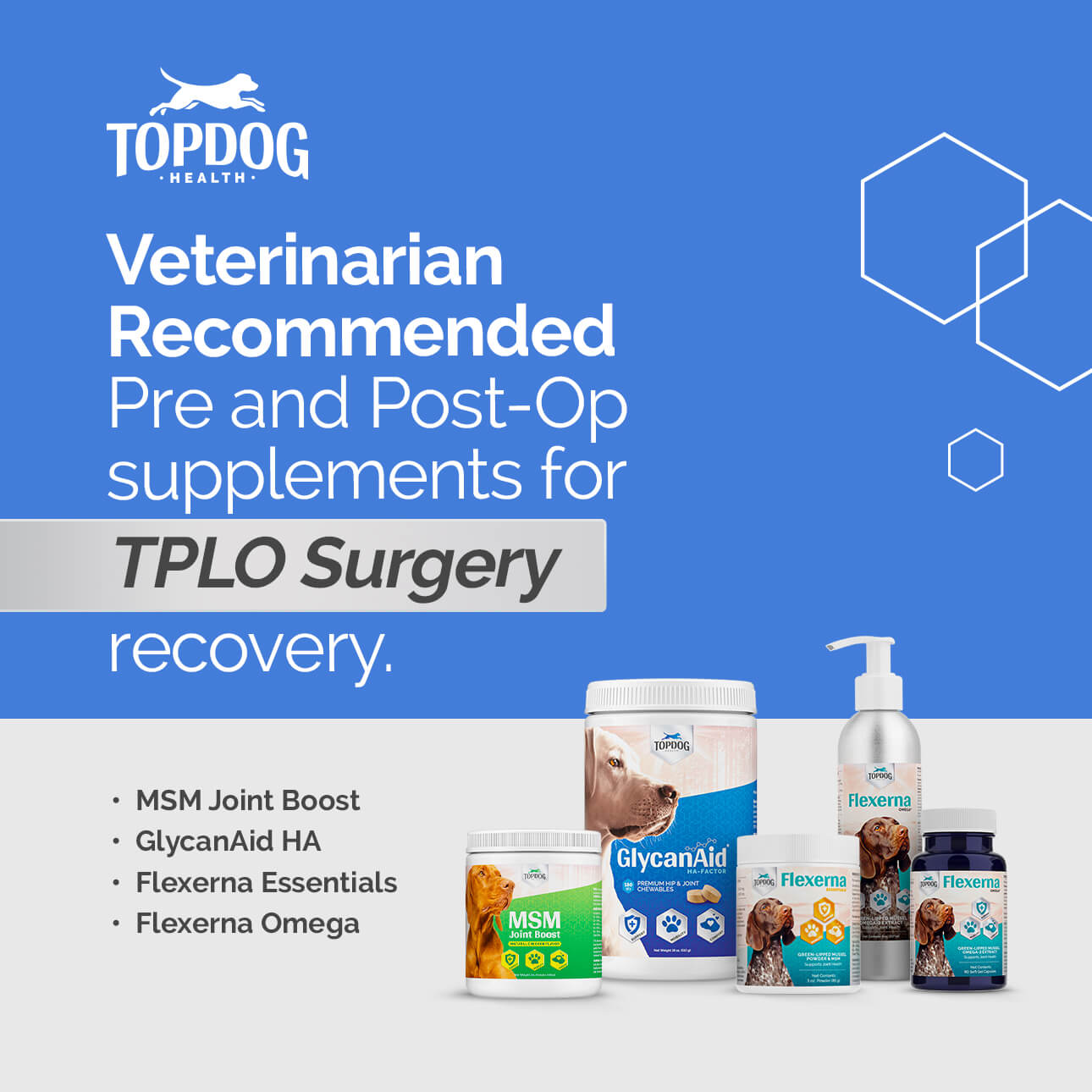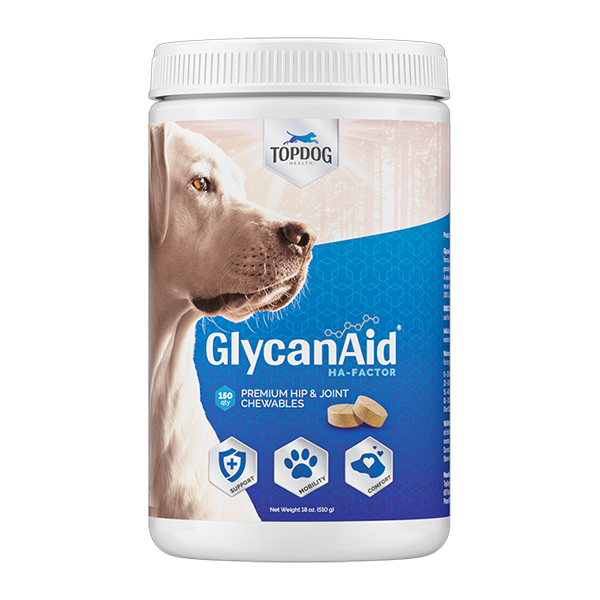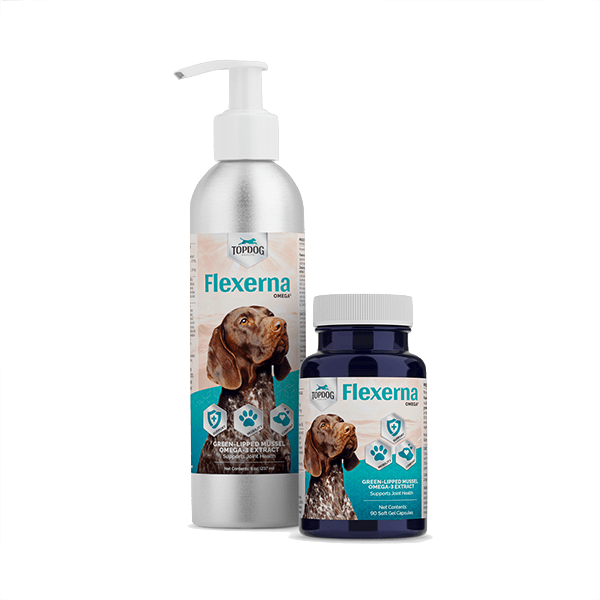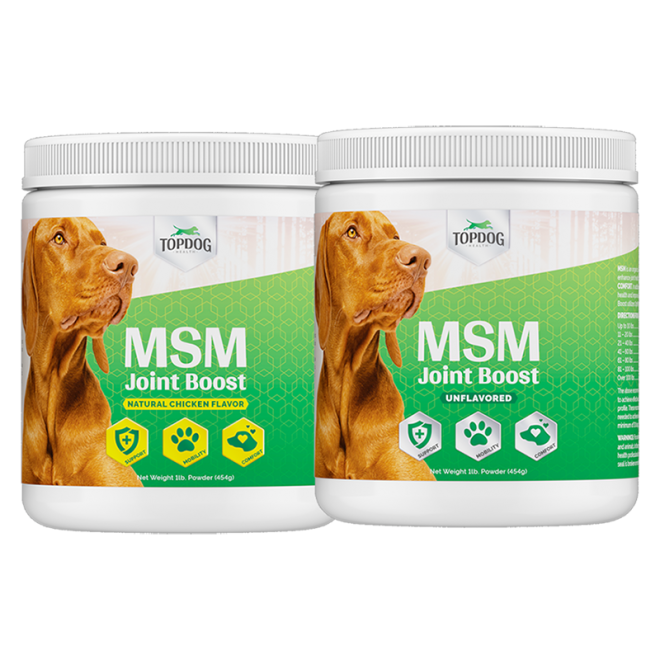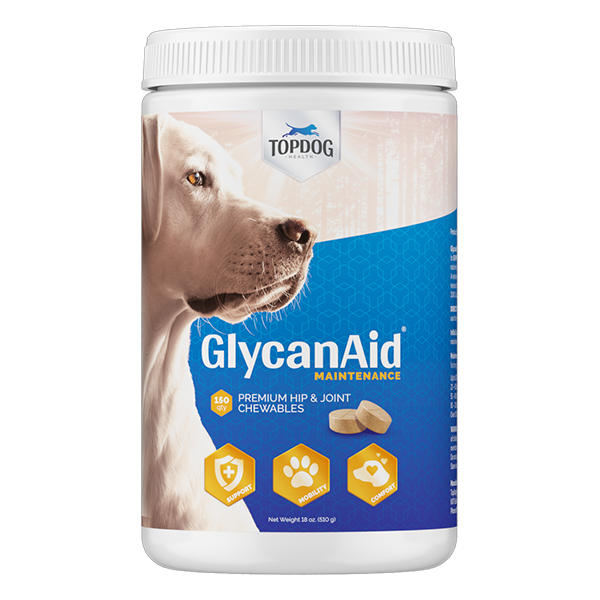Advantages
Extracapsular fixation methods, like the TightRope option, are less expensive than TPLO or TTA surgeries. This is mostly because any veterinarian with the training and tools can get in on it. Surgeries, where bones are cut, involve board-certified specialists at referral clinics.
Along with that, you’ll also have an easier time finding a vet that will do the surgery instead of waiting to get into a referral clinic or specialist.
The TightRope system has the advantage over other extracapsular methods in that it uses a stronger, more durable implant than most single sutures. This makes it less likely to fail. It also allows for more accurate placement of the implant as opposed to other extracapsular techniques also meaning less chance of failure and complications.
As a side note, the TightRope Fixation system has been found to have similar outcomes to TPLOs six months following surgery.
Disadvantages
The TightRope system can’t be all green grass and flowers or it would be the only surgery available for CCL injuries. Rather, there is a chance for implant failure, meaning that it breaks or the toggles fail in some way so that it comes loose from the bone. If this happens before enough scar tissue has formed, the knee will need to be fixed another way.
Other disadvantages are that a dog’s body might not like the implant and actually have an adverse reaction to it. This can show up as chronic swelling and discharge and off and on lameness. Infection, whether right after surgery or down the road aways, can always happen as well.
As a general rule, extracapsular fixations are meant more for smaller or less active dogs, basically those that are less likely to break the suture. While the TightRope implant is less likely to break than other sutures that are used, there still is that possibility for heavy, large-breed dogs or those that don’t have an ‘off’ button.
RETURN TO TOP


